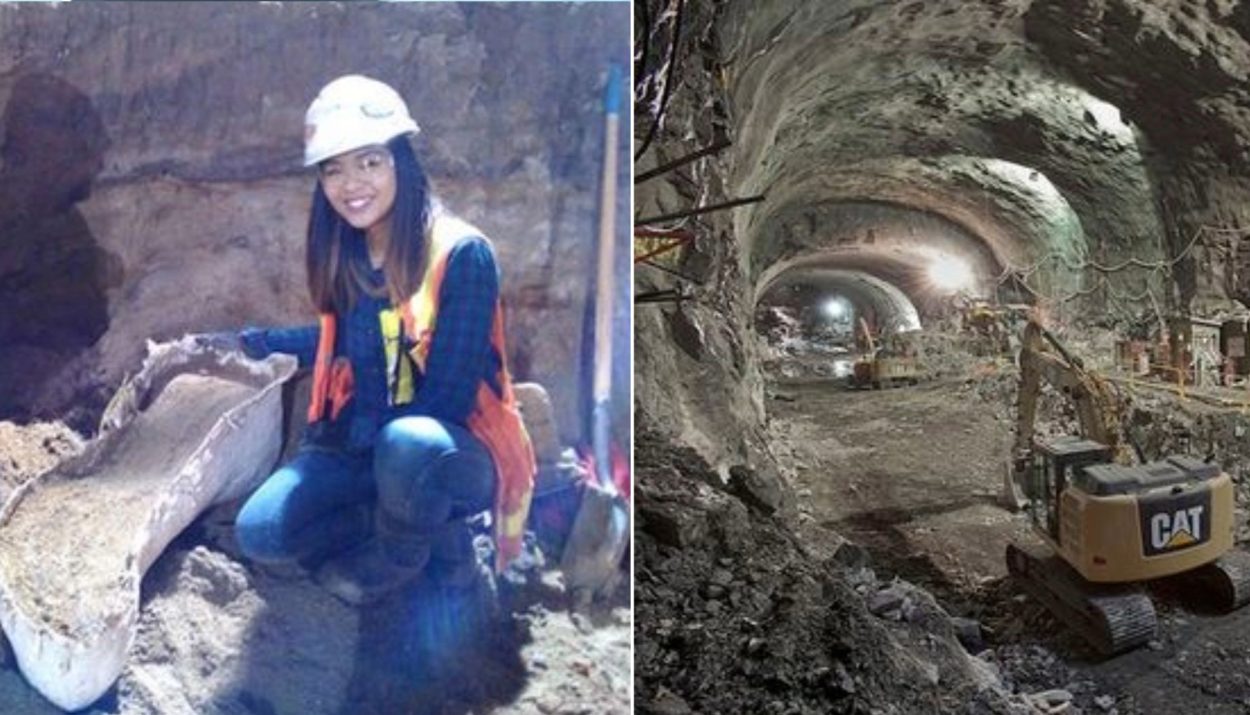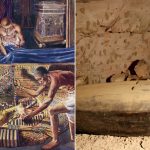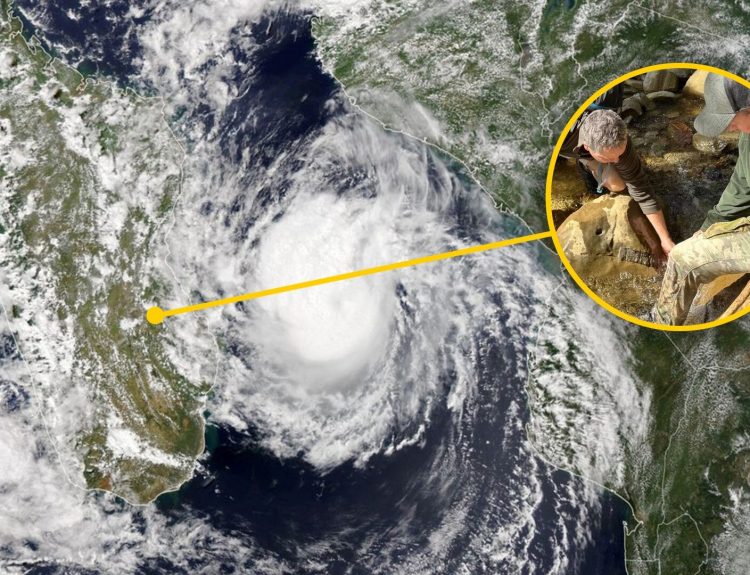You never know what you’ll find when you go digging deep beneath a major city such as Los Angeles. Vintage trash? Pirate treasure? The hopes and dreams of would-be actors and actresses? Construction workers expanding LA’s subway system recently unearthed something that dates much further back than the Golden Age of Hollywood.
A Mammoth Discovery
What the work crew found, in fact, dates back as far as 1.6 million years ago to the Pleistocene epoch, a time after the decline of the dinosaurs when mammal species were on the rise.

Joining Homo erectus were fearsome creatures such as saber-tooth tigers, dire wolves, and giant beavers. And of course, woolly mammoths.
Only 15 Feet Below the Street
Near the intersection of Wilshire Boulevard and La Brea Avenue, the workers discovered the fossilized remains of a young, male mammoth. Surprisingly, the fossils were located just 15 feet below where hundreds of cars zoom by every day. The LA residents who frequent the area probably had no idea that a vast deposit of prehistoric creatures are just below their feet.
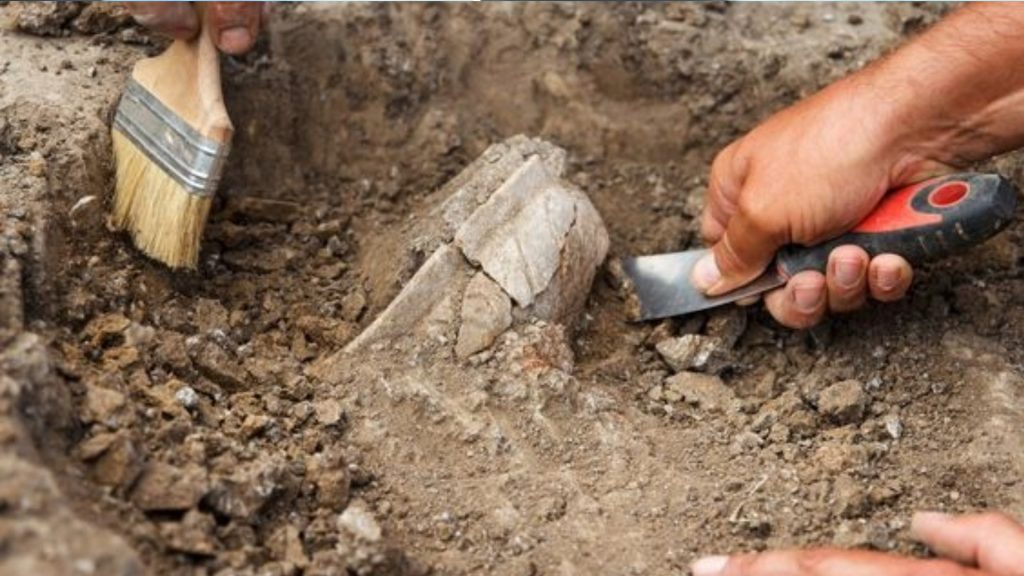
The “La Brea” name may ring a bell with you, thanks in part to the NBC television series of the same name. Although that show is purely science fiction, it does shine a light on the prehistoric past of the Los Angeles area where thousands of years ago, the non-extinct megafauna once called home.
The La Brea Tar Pits
Located in this portion of Los Angeles are the La Brea Tar Pits where naturally occurring asphalt has oozed up to the surface for tens of thousands of years. Animals of the past became trapped in the pools of sticky goo and died. Their remains fossilized lay undisturbed until modern times.

The La Brea Tar Pits is a rich repository of prehistoric fossils, with the majority from the Pleistocene epoch. Paleontologists have discovered a vast collection of specimens from the late Ice Age that have provided researchers with invaluable information to help them understand what life was like in prehistoric California.
The Tar Was Valuable to Indigenous People But the Real Prize Was Deep in the Pits
More than a century ago, the La Brea Tar Pits and surrounding area was included in a land grant from Mexico. In those days, the residents of Southern California took a cue from the Native American people of the region and used the natural tar to waterproof their roofs and boats. In 1901, W.W. Orcutt, a geologist with Union Oil was the first scientist to realize that the tar pits held the fossilized bones of extinct, prehistoric animals.
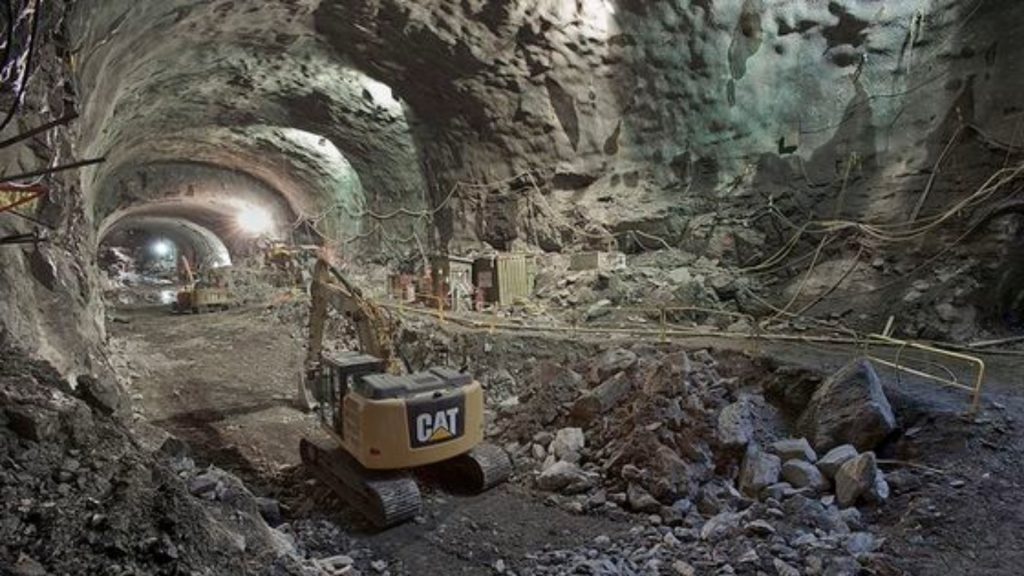
A professor with the University of California, Berkeley named John C. Merriam headed up the initial excavation work in the La Brea Tar Pits in the first few decades of the 1900s. The fossil specimens pulled from La Brea Tar Pits were in remarkable condition and dated back as far as 20,000 years to the time of the last Ice Age.
Lessons from the Extinct La Brea Coyote
One of the first prehistoric animals to be unearthed from the Le Brea Tar Pits by Orcutt was an extinct species of coyote. In honor of Orcutt, the fossil’s discoverer, the creature was named Canis latrans orcutti, or more commonly, the Le Brea Coyote. The discovery of the La Brea Coyote led to some groundbreaking realizations about the behavior of these animals.

The Tar Is Still Giving Up Its Secrets
Although the excavations at the La Brea Tar Pits have been a continuous process since the early 1900s, the tar still has more secrets to reveal. The work is ongoing at the tar pits and fresh discoveries are a common occurrence. In 2006, for example, workers building an underground garage for Los Angeles County’s Museum of Art, located near the tar pits, located more than a dozen additional fossil deposits.
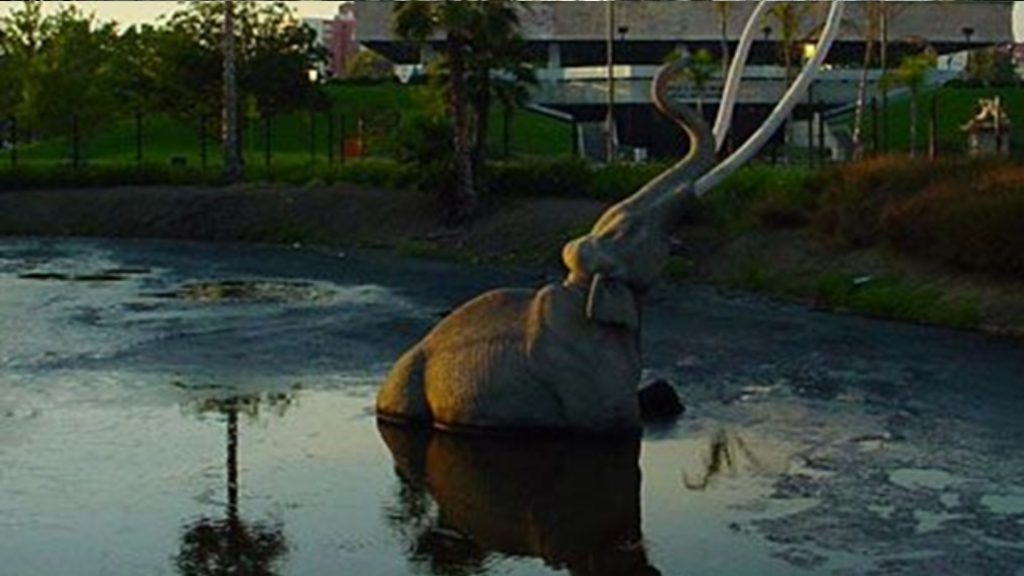
Included in these deposits were the remains of prehistoric horses, dire wolves, and bison, as well as one saber-toothed cat, an American lion, and a giant ground sloth. The crowning jewel of the discovery, however, was a nearly complete male mammoth that was given the name Zed.
Hayden the Mammoth
When subway workers found an additional mammoth fossil, they knew what they unearthed was significant. They immediately contacted the on-site paleontologists to ensure that the fossils were excavated in a way that would keep them preserved and unharmed. As per California state law, all construction sites that involve digging into the ground must have a paleontologist on location to supervise the dig.
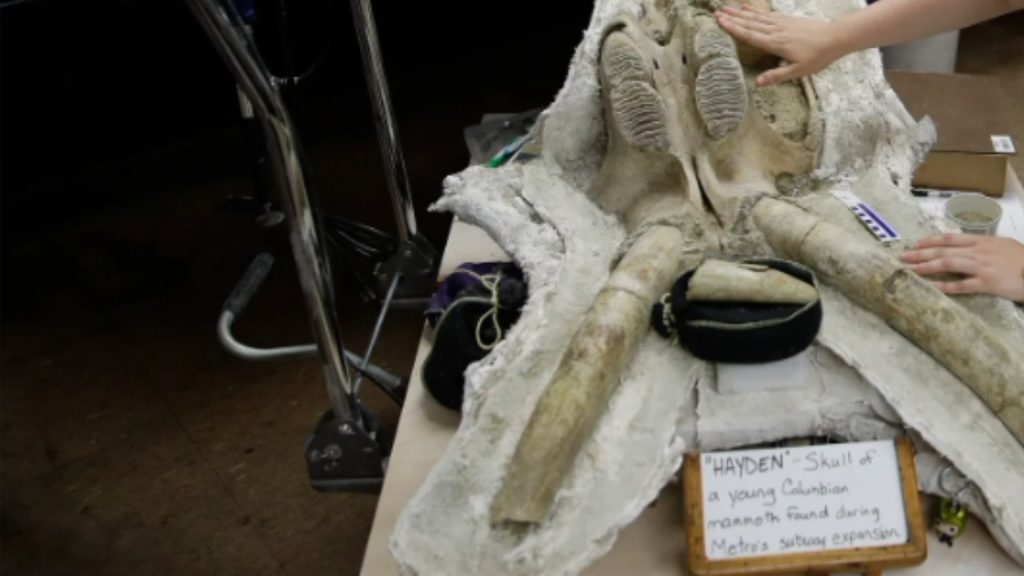
The paleontologist on this particular dig site was Dr. Ashley Leger. When the workers removed layers of soil to reveal the skull of a young, male mammoth, she dubbed the fossil “Hayden the Mammoth”, however, this find was soon given another nickname … the Metro Mammoth.
The Metro Mammoth, a One-of-a-Kind Find
The remarkable condition of the intact mammoth skull was just one of the reasons why this discovery was so amazing. Hayden the Mammoth’s skull was well preserved and undamaged. By comparison, the top of the skull of Zed the Mammoth had been sliced off by excavating equipment. The Metro Mammoth’s skull has been presented to the Natural History Museum of Los Angeles County to be displayed for the public.
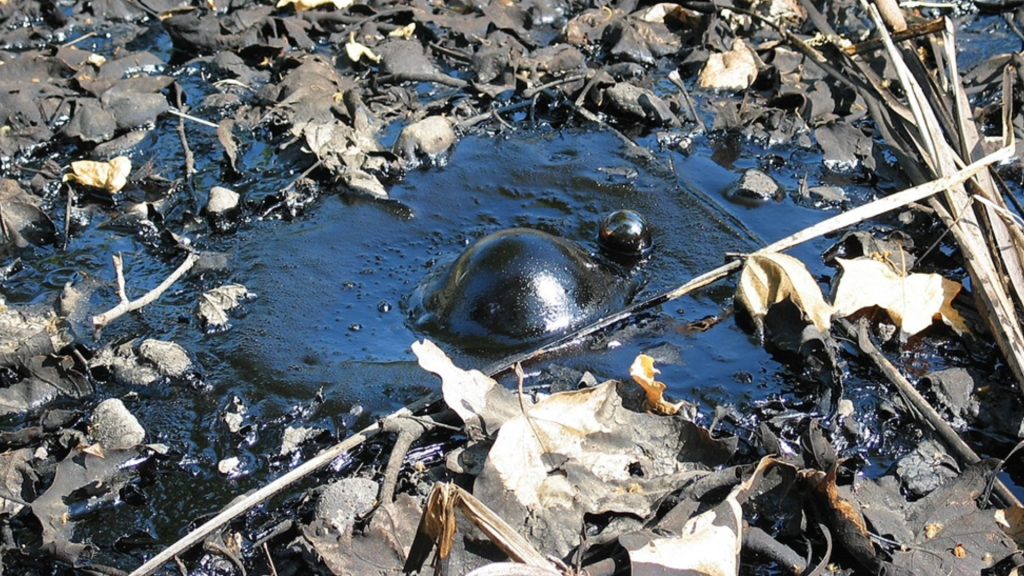
The other unique feature of Hayden the Mammoth is that the bones are white in color, rather than brown, like the ones discovered in the Le Brea Tar Pits. The fossils pulled from the tar pits all have the same hue, called “La Brea brown”, because the asphalt tar has stained the bones. According to the assistant curator of the La Brea Tar Pits, the white bones of Hayden the Mammoth tell us that this animal did not die in the pits like so many other prehistoric species.
The Rich History of Ice Age California
During the Pleistocene epoch, many parts of North America were covered by a thick blanket of ice. Southern California, however, was one of the few ice-free places. Although it is the fossils of the megafauna that gets the public excited, paleontologists have learned just as much from the fossils of plants, insects, birds, flowers, and pollen that have been found in the La Brea Tar Pits.
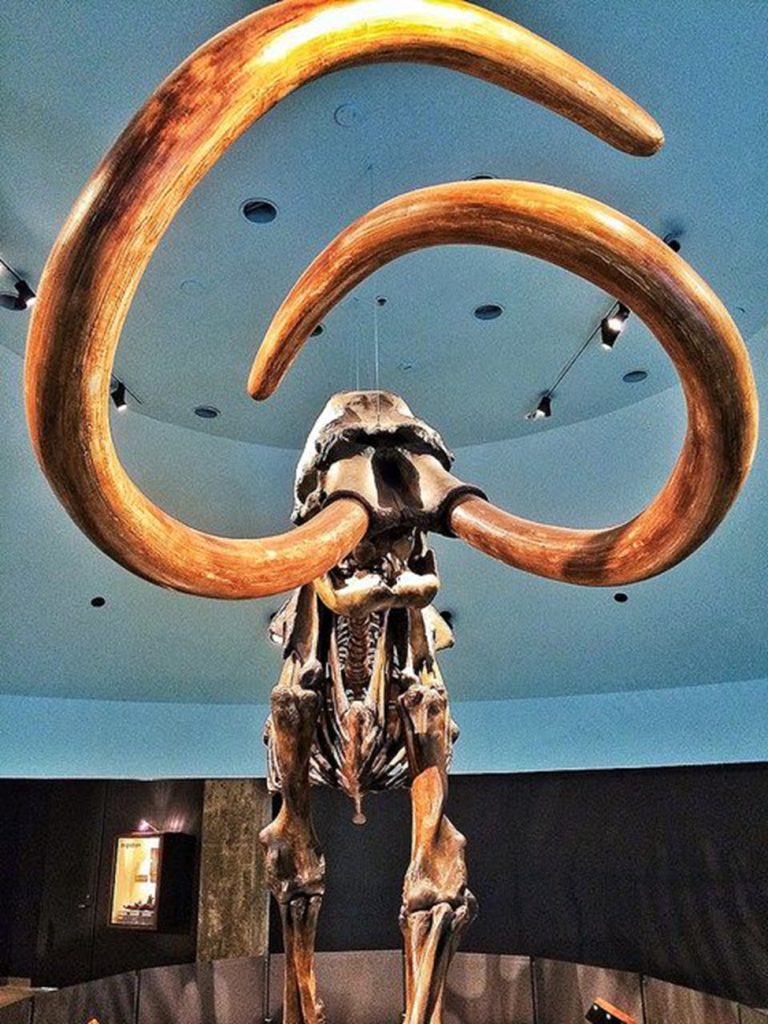
The largest fossils and the smallest ones all help paint a picture of what the Los Angeles area was like in prehistoric times. It shows that the region was much cooler and wetter than it is today. Researchers have gained an understanding of the hunting strategies, the diets, the herd structure, and mating habits of the prehistoric animals that have since gone extinct.
More than Animal Remains
So far, only animal fossils have been unearthed from the La Brea Tar Pits, with one notable exception. The only human remains that have been pulled from the tar pits was the partial skeleton of a young woman that dates back roughly 10,000 years.
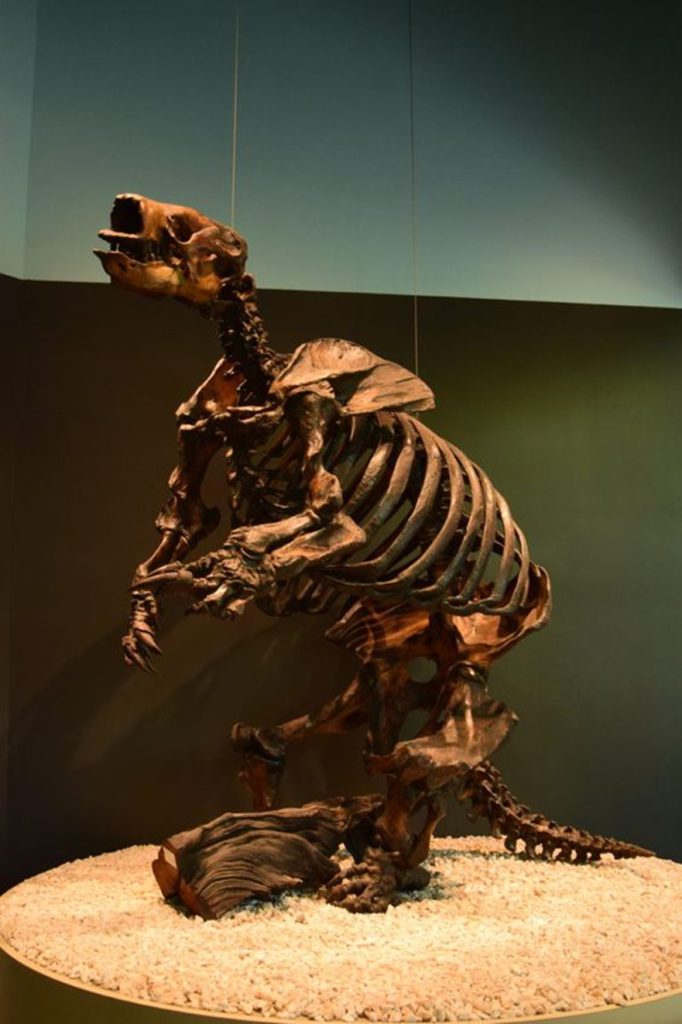
A Treasure Trove in Tar
Construction workers expanding the Los Angeles subway system, including the work crew building an underground parking garage, likely thought they were in for a typical day at work when their equipment struck treasure. Although the mammoth fossils they found may not be a vein of gold or pirate treasure, what they discovered was valuable in another way.
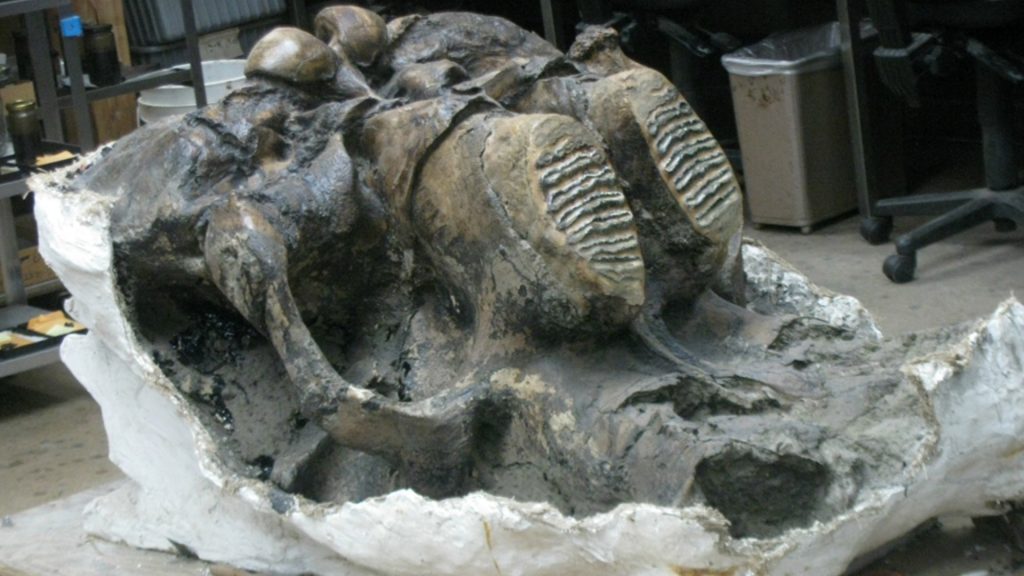
Zed the Mammoth and Hayden the Mammoth, otherwise known as the Metro Mammoth, are both keys that helped to unlock the secrets of Los Angeles’s prehistoric past. The fossils of the La Brea Tar Pits have helped expand our knowledge of the last Ice Age and the megafauna of the time.

